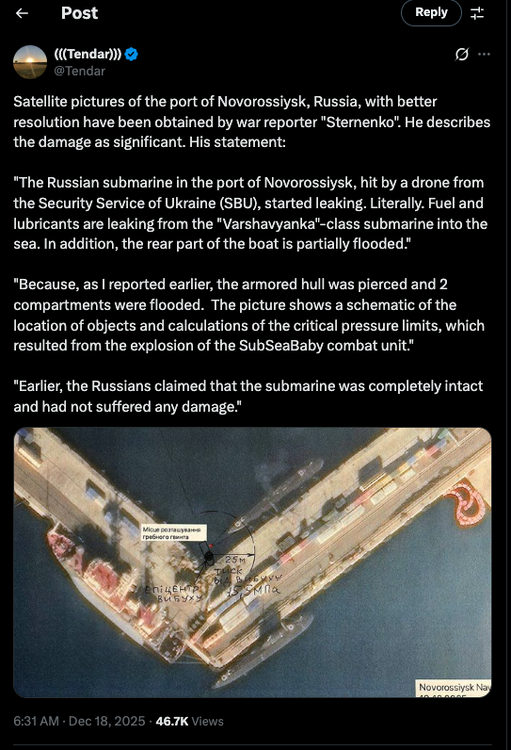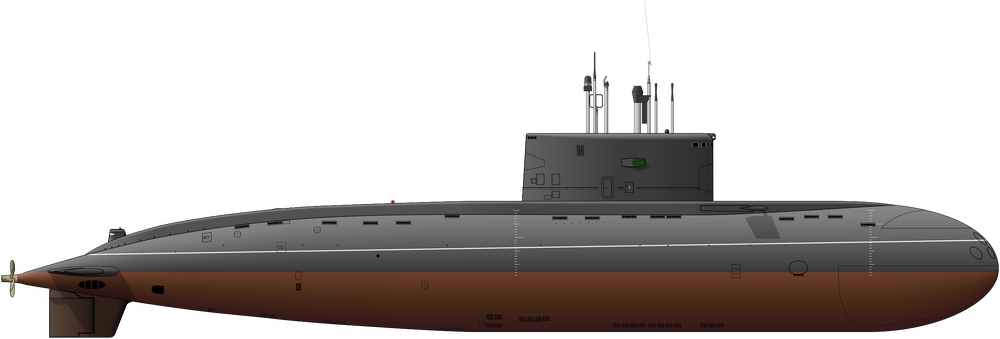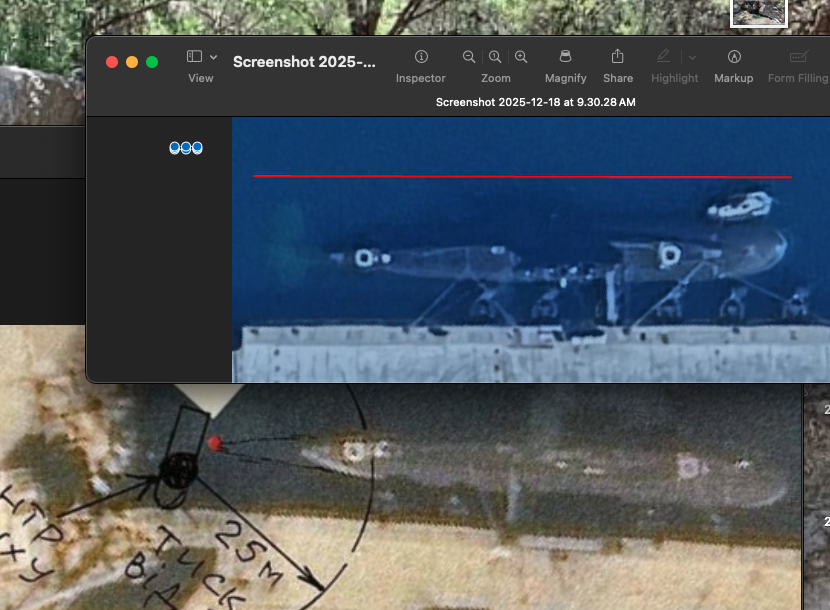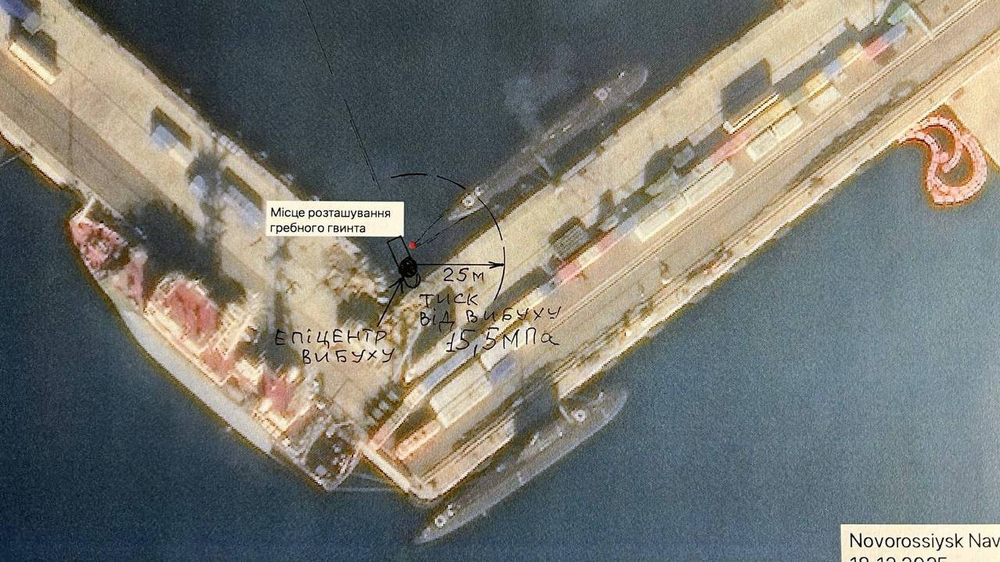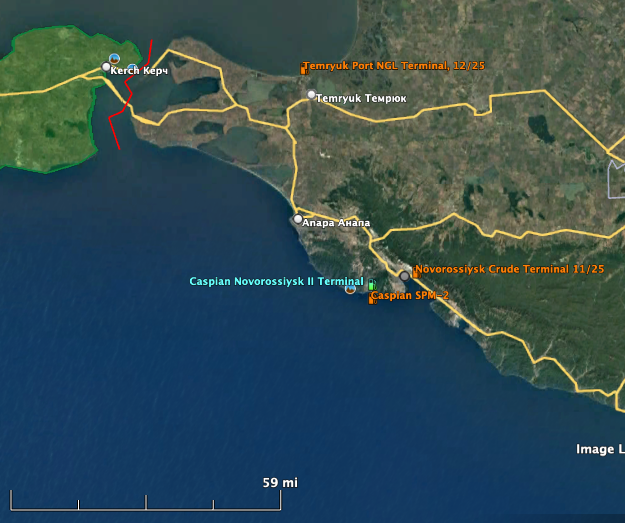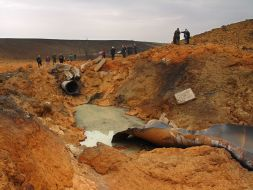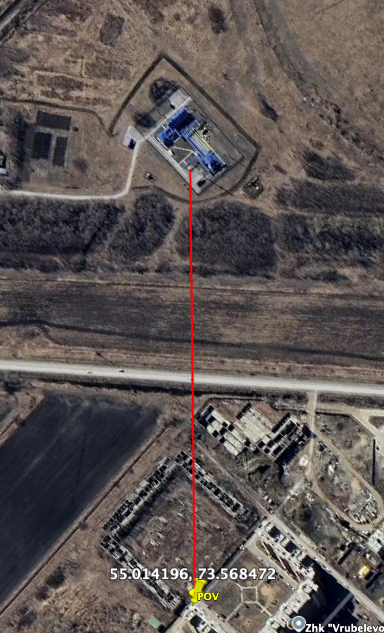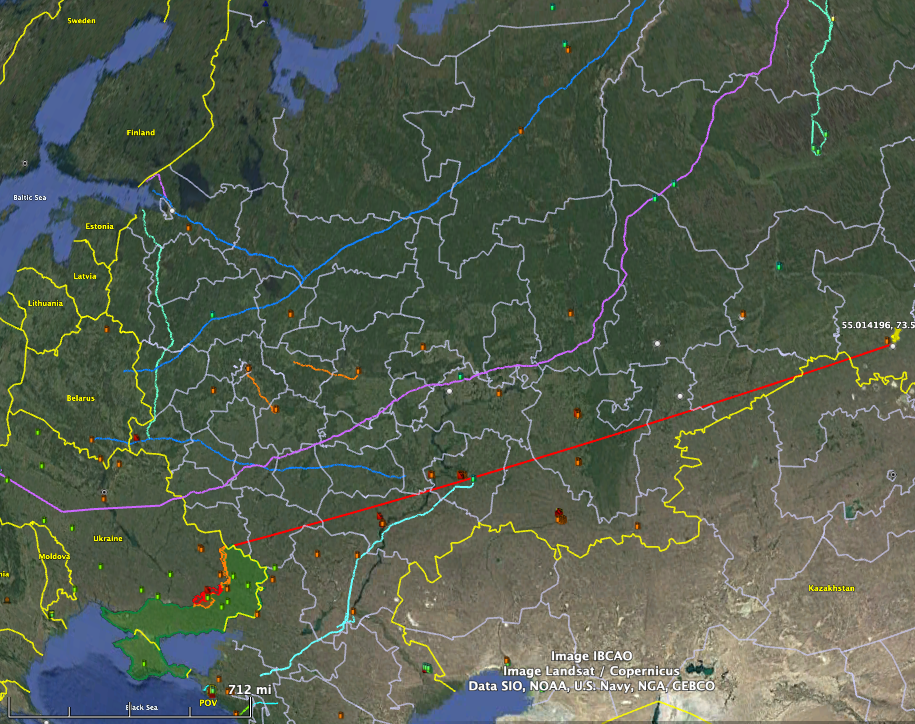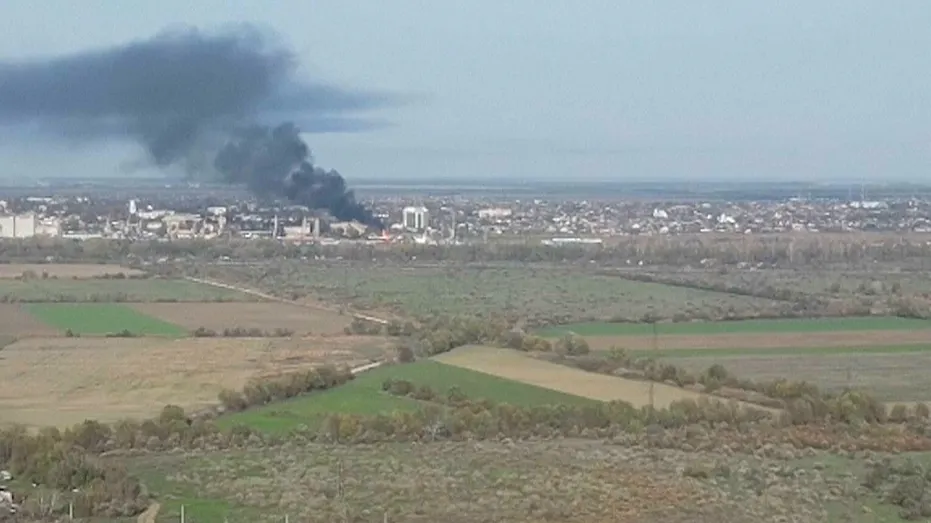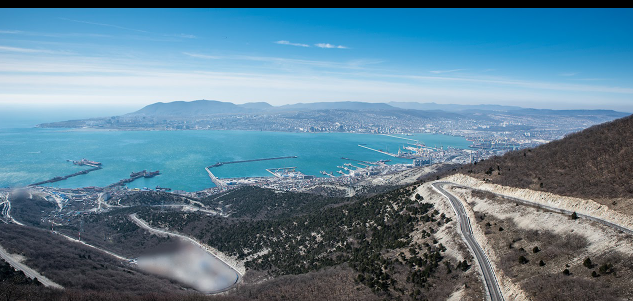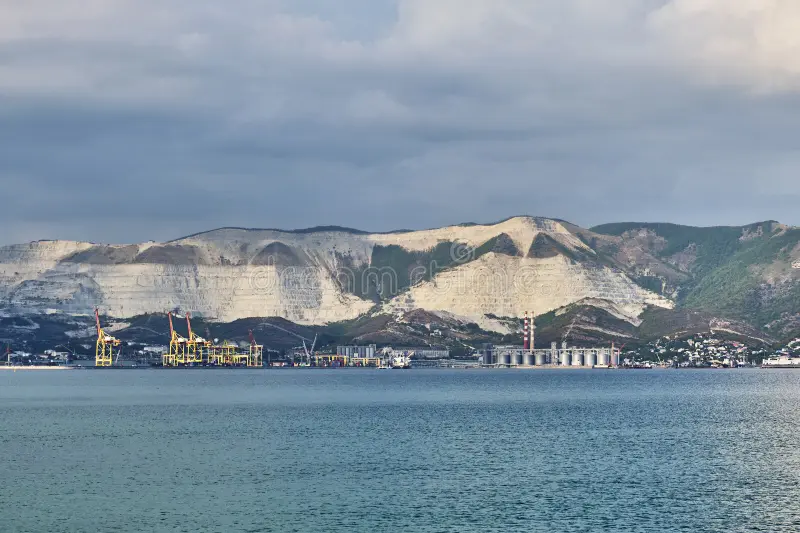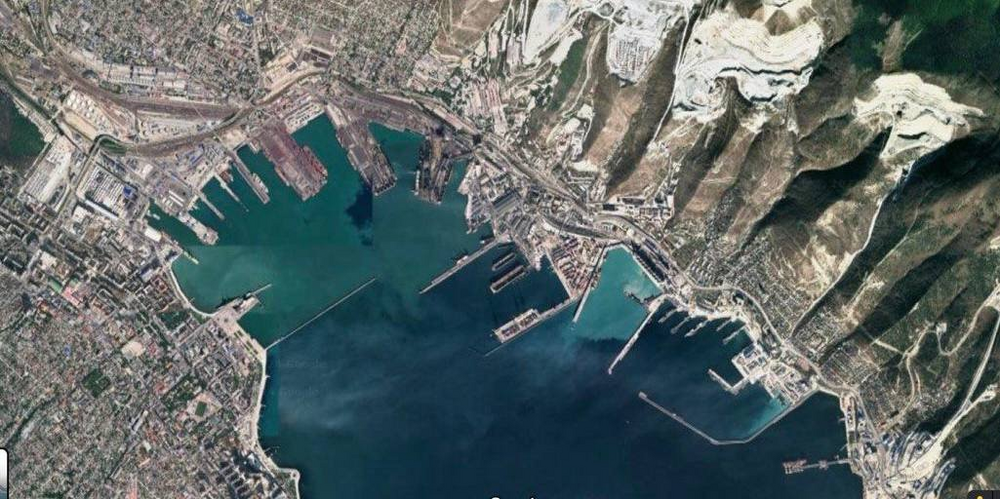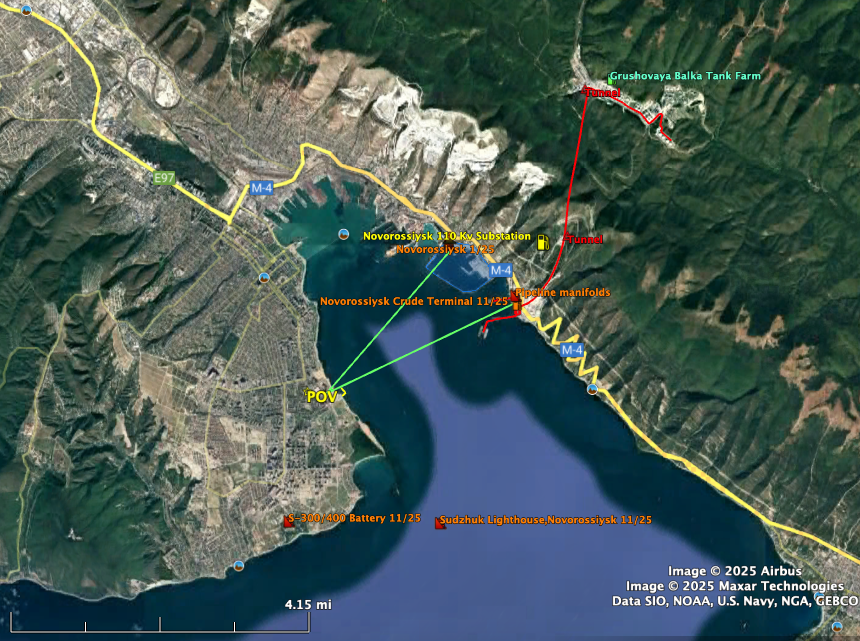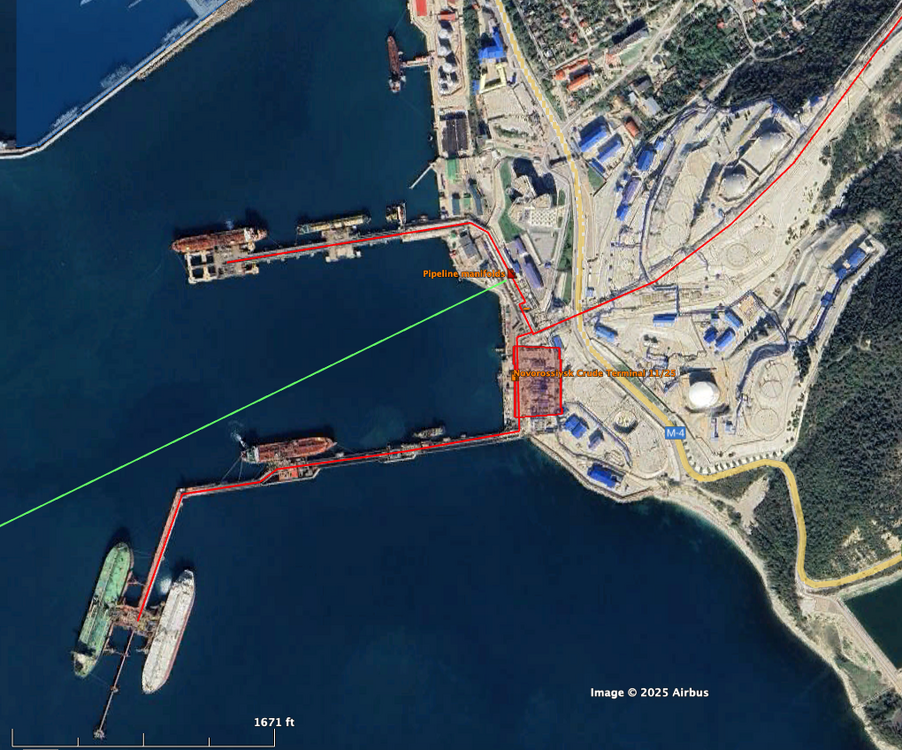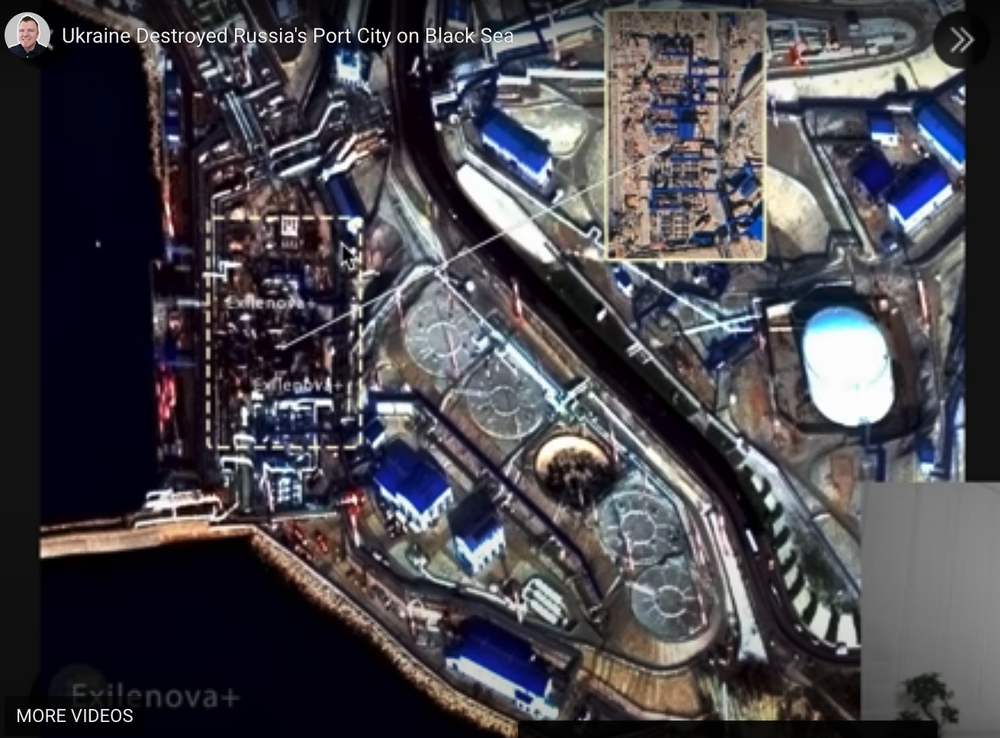-
Posts
1233 -
Joined
-
Last visited
Content Type
Profiles
Forums
Store
Downloads
Recruiting - 2020
2019-2020 Football Season
Football
Entertainment
Sports
News and Business
Cloak Room
Transfer Portal
Recruiting
Events
Everything posted by PTINS
-
-
BOOM MOTHER FUCKER - Will Muschamp's Triumphant Return
PTINS replied to Nueces River Rat's topic in Football
Not sure who. I don't remember if is was Bobby or Gerry or some other $9.95er, or a poster here, but i read it early in the process. Time to push all the chips in the pile. -
BOOM MOTHER FUCKER - Will Muschamp's Triumphant Return
PTINS replied to Nueces River Rat's topic in Football
You had me at Intensity. I saw the tag line on phone last night... "PK Fired" ...WT holy Fuck?????? "Muschamp ..." Oh, Ok. Sorry about PK, but ... "... when you can upgrade, do it every time. he has produced some of the best and most physical defenses we've had in a long, long time stop the god damned penalties, stop talking about culture and demand attention to detail at every level and win fucking games. One of the very best pure coaches on a side of the ball that has ever donned the burnt orange and white has returned to Austin. Make no mistake, this was a very good day for Texas football. What I absolutely love about Muschamp as a coach and person begins before an install, video breakdown, play call or scheme. It's the intensity, the passionate communication, the non-stop motor, a fire that burns constantly, the way he challenges his defensive players to bring the best out of them, the demand for physicality, the demand to be detail oriented of his players which creates discipline. The spending time with family..." I'm 100% behind this. I liked PK, but his late game defense was the equivalent of Herman's turtling offense. Those late game collapses hurt us, even if we won the games. The scoreboard made easy wins look like close games. Boom was Sark's 1st choice. I think that's where the list ended. Muschamp had a kid at Georgia; that was an easy decision for him. When my company was acquired, I asked my new boss for a job description. He took his feet off my desk, grabbed a sticky note, and handed it to me; "MAKE MONEY!" "Now, which word do you not understand?" Boom doesn't send mixed signals. His style of communication is more direct. His personality and style of play resonates with players. I think he will get Texas over the top and on recruiting a lot of star players that we almost get, but finish 2nd. Coach Boom brings a passion and intensity that has been in short supply for a very long time. Somebody has to energize the team. We have a lot of great players that are good people, culture guys, but they are all of the "walk softly and carry a big stick" kind of guys. Somebody has to charge up the team emotionally. Muschamp will find it, bring it out, and cultivate it. And equally important, that passion and intensity will bleed over to the offense. After years of making money for others, I started my own company so I could watch my boy's grow up, did it for 10 years. A+ for Coach Boom. The man knows whats important in life. Early on, someone alluded to the notion that prospective new offensive coaches were in the playoffs. I thinking there's more to come. "The oxen are slow, but the earth is patient."- 970 replies
-
- 16
-

-

-
I'm responding to myself, but I didn't want to pollute my first response. This is borderline CR, but still related to the topic. TLDR The US has tremendous natural gas resources, and Biden kicked the LNG industry (and O&G) in the 'nads. Trump reversed that mindset, 100%, throwing gasoline on the fire. Gulp. Trump was right. I can't say it. The US should produce gas, make LNG and export it, and Europe is much closer and easier than SE Asia. But it will impact domestic gas prices. The next time Texas freezes for a week, who gets the little bit of gas still being produced? The sparks fly when the reality of the present day market gets in the face of long term contracts, and $$$. The answer is not binary, and it it not finished when the papers are signed. In is a huge, living, constantly changing beast, at it needs to be treated as such. DJT may be a self anointed real estate mogul, but I think he and his 2 minute attention span would get his ass handed to him trading energy commodities. To be fair, I think that also applies to most of our former Presidents. I will never understand the pushback on putting energy professionals in the Department of Energy. What happens with the next US administration? Back to the other extreme? Europe is replacing Russian natural gas with imported LNG, from the US, and other places. Europe will be dependent on the kind hand offered by the US. Kind'a like NATO was. How's that's working out for them? While looking for Russian refinery data, I saw some verbiage that Russia now flares more gas than any other country. It used to be between Iran and the US. Russia I'm not sure if that includes Nordstream, but the number was close to the pipeline capacity, ~ 3-4 BCF/day, or ~ 1 or 2 LNG plants. When all is said and done, Russia has the gas production and reserves and the pipelines assets are already in place, and Russia SHOULD still be the cheapest source of gas for Europe. But Russia should never be the only source.
-
I'm not that familiar with the European gas market (I don't have tome to go down that rabbit hole), so i'm not exactly sure what gas price is shown in the graph. But my first guess is that is an apples and boxcars comparison. Below is a similar plot of US gas prices, with no indication of the source of the data. Directionally, it appears to be valid information, but the entities that have the trading data also tend to have an agenda, so beware. If you over lay the two plots, they are similar, which one might conclude that US and European prices are the same. In one sense they are, but in reality, they are very different. The US has 100's (1,000's) of supply points and 1,000's of delivery points, with 1000's of transactions reflected in the gas spot market price at a specific point in time. In the US, the paper price is indicative of the real price. By comparison, mainland Europe (Not the UK and Norway) has a much smaller gas market, with minimal native gas supplies, and fewer, and larger delivery points. In the one sense, it is also a valid price, but I expect the volumes transacted at that price on a daily basis is but a small fraction of the US volumes From the graph, one might conclude the US and European prices are similar, so why do they need to import LNG? Well without LNG, that gas price goes off the chart. I asked Google, "What is the delivered cost of LNG to Europe?" (Again, directionally, the answer and information is within reason.) "AI Overview The delivered cost of LNG to Europe in late 2024/early 2025 typically ranges from $10–$15/MMBTU, but varies significantly with market conditions, adding liquefaction, shipping, and regasification costs to the base gas price (like U.S. Henry Hub). Factors like high Henry Hub prices, increased demand, and freight rates pushed delivered prices up in late 2024, while cooler weather and ample storage can lower them, with prices sometimes hovering around 33–50 €/MWh (equivalent to $10–$15/MMBTU) at the Dutch TTF hub. Cost Breakdown: Base Gas (e.g., U.S. Henry Hub): ~$3–4/MMBTU (in early 2025 estimates). Liquefaction: ~$2–$3.50/MMBTU (fees for turning gas into LNG). Shipping (Freight): Highly variable, $1–$3/MMBTU or more, depending heavily on distance and tanker demand. Regasification: ~$0.50–$1/MMBTU (cost to turn LNG back into gas in Europe). Key Price Drivers: Henry Hub Price: The cost of gas at the source (US). Shipping Demand: Higher demand (like surges in winter) increases freight costs, widening the gap between source and delivered prices. European Storage Levels: Low storage levels and cold weather drive up European spot prices (TTF). Recent Trends (Late 2024/Early 2025): Europe's high prices have attracted record U.S. LNG exports, even pushing prices above Asian markets. While U.S. Henry Hub prices rose, European spot prices (TTF) recently saw lower levels in late 2024 due to milder weather, though cold snaps can quickly reverse this, increasing costs. In essence, it's a market driven by supply, demand, and transport economics, with U.S. LNG often costing significantly more in Europe than pre-2022 pipeline gas." So, somebody is paying $10-15/MMbtu (3-4x the US gas cost) for the European gas price to be the "same" as the US. 20 years ago, the US built LNG import terminals (at the beginning of the shale boom, which unlocked Appalachia gas). Some actually imported LNG. Most of them started up as LNG export terminals, without ever importing LNG. It wasn't as simple as switching two wires and reversing the polarity. It takes $ Billions of dollars, tons of paperwork, and a regulatory nightmare, all of which is at the whim of the current administration. The long haul gas pipelines from the Gulf Coast to the Northeast, were bifurcated, with Appalachia gas supplying both the Northeast US demand and a new Gulf Coast LNG export market.
-
My initial reaction was the subsea drone hit mostly the dock and less of the submarine. Maybe not. Per wiki, the Kilo Class submarine is 238-242 feet long, depending on the model. I merged a couple of screenshots of the submarines in the harbor, the targeted sub and a random sub at the dock. Bottom line, even though the videos show the explosion at the corner of the dock, it appears the attack may have inflicted more damage to the sub than what you can tell from the recent photos. The red line is ` 240 feet long
-
Re: The isolationist view of the US relative to the world. Nowhere is this view more impactful than the ignorance of the US, the people and the government, as it relates to oil and gas. The US put an oil embargo on Japan pre-1941, a country that was 100% dependent on imports. They bombed the fuck out of us. The US was late to the party, but the first thing they did was go to Africa to stop Germany's rush to the Arabian oil fields. Prior to 1973, the US was by far, the technological leader in the industry, and the availability of cheap gas across the country was a reality, and an expectation, cause "were Americans". No body cared that most of the oil came from foreign counties. The U.S. and other nations supported Israel in the Yom Kippur War. Saudi Arabia led OPEC in the Arab Oil Embargo of 1973-74, causing domestic oil prices to quadruple, from $3 to $12/bbl, triggering gas shortages, long lines at pumps, stagflation, and a major shift in global energy policy towards conservation and energy independence. (OPEC was modeled on the Texas Railroad Commission) In the US, conservation and energy independence took a back seat to blaming the domestic oil industry for something that happened half way around the world. Something they had no control, or influence over. The couldn't control oil prices, but they could control natural gas prices, a domestic industry. Government regulations controlled interstate gas prices, but not intrastate prices, eventually putting the producing states (Texas) at odds with consuming states (the Northeast). The Iranian Revolution in 1979 was directed at the US, for harboring the Shah, a US/European puppet. Oil prices quadrupled again, to over $40/bbl. Guess who was to blame. Again. This was not all bad. The spread between unregulated oil prices and regulated gas prices gave the Gas Processing Industry, a margin based business, a boost like nothing before or since. In 1979, the O&G industry attracted the best and the brightest. The advice to "The Graduate" in 1967, a single word, came to fruition; "Plastics." As a country, we have been on a 50 year crusade to methodically dismantle the 150 year old domestic industry, in large part, because people just don't understand how it works, or even care. Though there are fewer US companies and much less competition, the domestic oil & gas production is higher than ever before, and the US is still the technological leader in the industry, we just have a lot less influence on world affairs. Which is what an Isolationist wants.
-
"I’m curious what the intelligentsia on this thread thinks." I believe this thread is the most broad based, informative exchange of information I have been a party too, whether as a student, a professional in the work place, or a casual observer. My limited search capabilities within the thread are frustrating at times, because many of these individual tangents have been discussed at length, multiple times. An occasional refresh is welcomed, as new information becomes available based on the dynamics of a multifaceted war. As cumbersome as it may be, going back and reading older posts is beneficial, as most of the responses today are abbreviated versions of the more in depth analysis from previous posts. I'm guilty of same, as I have posted versions of the same thing many times. The fundamentals stay the same, but the particulars change constantly. With that said, a rereading of Tom Clancy's "The Bear and the Dragon" is on my holiday list. It has always made sense for Russia to be the main supplier of Oil and Gas to Europe and China. Always. It didn't happen until Russia joined the commercial side of the world and made a move to monetize their tremendous natural resources. Their oil & gas industry in many ways is in the same state as the Permian Basin was in the 50's-60's. Well known, but virtually untapped. Russia played nice, negotiated the Nordstream gas contracts w/ Germany and western Europe, and the Sakhalin LNG contracts w/ Exxon, Shell & SE Asia, and opened the door for foreign investment to step in and monetize the resources. And then, Russia's gonna Russia. They invaded Ukraine. At the end of the day, everybody has a price. Russia has available, exportable, relatively cheap Oil & Gas, and no safety or environmental constraints, and is void of a litigious society. Re: Russia Energy When I throw my dart, I peg the Russian refining capacity reduction at ~ 20%. The US Energy Information Administration (EIA) is a great resource for all things energy. The data is very good, but it is not meant to be a near term analysis. Here is a link to their brief on Russia energy, as of 2024. Country Analysis Brief: Russia Last Updated: July 24, 2025 The 38% of Russian refining capacity offline mentioned by @atomheartbevo's reference in the Carnegie article was a simple calculation. Ukraine targeted and hit 38% of the refining capacity, so as much as 38% of the capacity might be offline. Even with the microscope focused on the US refining industry, getting near term data is hard, as the reporting is such that its better to give the actual data to the government later, rather than giving them preliminary data sooner. Refining capacity is a loose term. You might have 4 units built over the past 80 years that do basically the same thing. The capacity of all 4 is deemed to be the nameplate refinery capacity, when in reality, Unit 4 runs at 100%, Unit 3 runs at 75 %, Unit 2 runs at a variable rate based on demand, and Unit 1 basically mothballed. Refineries "make" more products than the crude they refine. There is a 1-3 % gain across the refinery. Crude oil is a mix of bb's, peas, marbles, ping pong balls, and tennis balls. Refined products are more like the purity components, so when you separate the molecules, the volumes "grow" as there are more empty voids between each ball. A 400,000 BPD refinery would refine a train of tank cars 4 miles long, every day. Refineries have large storage capacities to insulate them from supply/demand disruptions, say a nominal 10 days of storage on each end; in this case, ~ 8,000,000 bbls of storage. One company may report net change to total storage volumes as "refining", where a second company would report actual refine inputs, and a third may report actual refined products made. I expect the data given to the EIA is consistent, but any reporting on industry trade reporting will be all over the board. The current state of Russian refining operating rates is a hard thing to pin down, even before the Ukraine invasion. Russian Nameplate Capacity is ~ 6,500,000 bbl/day (6.5 MM BPD), with a pre-war operating capacity of ~ 5.5 MM BPD, with ~ 17% of the capacity always offline. Of the 5.5 MMBPD normal capacity, estimates of capacity reductions range from 0.5-2.0 MM BPD, or an operating capacity ranging from from 91 to 63%. Some of range could be the difference between October actual volumes v. December estimated throughput volume. Ukraine has mentioned specific refinery columns that were targeted, but confirmation on exactly what was it, and how bad, is virtually non existent. Did they hit the pressure vessel or the lines connected to it? A breach of the large pressure vessel (10+ ft diameter) is normally a total loss, as these are ASME code vessels with non negotiable specifications. That wold be a 6+ month replacement. In Russia, maybe they weld a plate over the hole and call it good. That would take a few weeks or a month. Normally, Russia produces ~ 200% of their internal diesel demand, and ~ 130% of their gasoline demand, with considerably more exports of diesel than gasoline. On a short term daily/weekly basis, a specific refinery going off line may cause spot shortages. Over time, a refinery can change their operations to make more more gasoline and less diesel. The US moves the majority of refined products (90+ % ??) via pipeline to a terminal, and trucks from the terminal to the gas stations. In Russia, other than Moscow and maybe St. Petersburg, most of the refined products appears to move by rail. I combination of a refinery attack, a storage depot attack, and a rail bridge attack in close proximity could cause a product shortage for some period of time.
-
These are two similar, but unrelated issues; A power plant going down, and refinery operations. There was accident at the Angarsk Irkutsk-9 Combine Heat Power Plant, a 540 MW coal fired facility that provides power and heat to both the city (250,000+) and the Rosneft-Angarsk Refinery (200,000 BPD) co-located at the sight. Angarsk is 3,000 miles from Moscow, and ~ 150 miles north of the central Mongolia, in the middle of nowhere, and I mean nowhere. The Power Plant has 6 units, (capacity of 330 MW), that were built from 1963-69, and 2 units (capacity 210 MW) that were built in the early '80's. It is possible new natural gas fired boilers were added in the last 5 years, but nothing shows any newer additions. An accident occurred on December 7 when a boiler unit at the plant failed, and another boiler was reportedly shut down due to a malfunction a day earlier. Boiler accidents in the US are rare. In Russia, ??? depending on 60-70 year old boilers is not a comforting feeling. "It was reported that all services are on high alert. The emergency regime has been introduced in the Angarsk district in connection with the accident at CHPP-9. Heat supply is limited in 1,546 apartment buildings housing more than 167,000 people and 121 socially significant facilities," the local mayor's office said in a statement." "On Dec. 1, hundreds of motorists were stranded on a stretch of the Baikal Highway, part of the Trans-Siberian Highway, after three days of severe weather brought temperatures near minus 30 degrees Celsius (minus 22 Fahrenheit), heavy snowfall and strong winds. At its peak, the jam stretched roughly 100 kilometers (62 miles) along the southwestern shore of Lake Baikal (~ 50 miles from Angarsk). Some drivers, including families with children, reported running low on fuel, water and food." The logistics chain is always critical, and in remote areas, with minimal infrastructure, during extreme weather conditions, good luck with that. I would think any available power is moving towards the west (Moscow), not the east (Siberia). After 3 years of war and reduced energy availability, there are probably many localized areas that are one event away from a similar situation. One thing they have in their favor, they come from heartier stock than the average Austinite person. The refinery operations is something different. Refinery turnarounds (long term scheduled maintenance, including shut downs, every 4-6 years) are necessary, but often postponed or delayed for any number of reasons, a war being one of them. It is not necessary to shut down the refinery to change the qualities of the products produced. US refineries do it twice a year to transition from the winter blends to the summer blends for gasoline and other transportation fuels. I am not familiar with the different fuel blends for the northern climates. 3 years of attacks on Russian refineries and gas plants, has probably reduced the availability of some of the blending stocks (lighter weight, more volatile) Russia may use in gasoline blending. I know alcohol is an option, but that consumption is prioritized in other areas. Generally, aviation fuel (Kerosine) is a cleaner, filtered diesel that is better in extreme cold. But Diesel has better lubrication properties, so it is better for engines with more moving parts, like car engines v. jet turbines. I would expect the quality control on Russian refined products is poor, especially so for the domestic market. But I'm sure the average Russian has been though similar circumstances before and the black market is able to meet the demand.
-
That is a sad graphic. Texas is ~ 25th percentile in "Yards before contact" and ~ 27th percentile in "Yards after contact". Over all, Texas is one of the 10 worst non-QB rushing teams in the country. Only 3 SEC teams in the top quartile of either speaks well of SEC defenses, I think. Both UTSA & Texas State punching above their weight.
-
Glide path similar to a rock. The guys lucky it cleared the window,
-
That is a complex question. "Phasing out" is a price sensitive term, and human nature generally means anybody will do anything for the right price. Putting the LNG "sanctions" aside, at the end of the day, a spot cargo of Russian LNG will be cheaper than others, simply because the transit time from Russia is less than the US Gulf Coast, or the Middle East, or Australia. The capacity of the two Nordsteam Pipelines was ~ 10 BCF/day, which is ~ 4-5 world class LNG Plants. That is a big hole to fill. Russia's total LNG capacity is ~ 5 BCD, some of which was earmarked for Europe. Some of these came on line recently, in the Arctic and St. Petersburg, and how much they can actually produce is kind of a mystery. It is new enough, and given the challenges of the arctic, and Russia business in general, demonstrating reliability is a prerequisite for longer term contracts. In many cases, the companies/countries that need the LNG are also owners in the liquefaction/export facilities, so they take their ownership share of the LNG in-kind, rather than depending on third party sells. LNG is a very different animal than oil or refined products. In some cases, though there is a point to point "contract" for the LNG, that contract is in limbo until the ship docks at the destination. In times past, it was commonplace to have a ship change direction in transit and go to another destination, without any significant contract repercussions. While on the high seas, it is fair game for the highest bidder. Even within the local gas market, that information is closely guarded, because a huge influx of gas moves the market. US LNG costs will become more expensive, because the underlying demand for natural gas will increase. In the early 2000's, gas was expensive, so the US started building LNG import terminals. The Chenier Plant at Sabine Pass started as an import terminal in 2008. We received LNG imports into Louisiana ~ 2010 (I think we received 4 cargo's), and in 2012, Chenier received a FERC permit to building export facilities. The combination of horizontal drilling and hydraulic fracturing of shale, unlocked the gas resources, and all bets changed. Biden's election in 2020 changed the narrative, and Russia's Invasion and Nordstream's explosion spiked gas prices, for a bit. The Donald, and new reality of the US stepping in to fill the European void from losing Russian gas is not an issue from a resource/capacity perspective. The price of the LNG is the first big question. Domestic gas prices have doubled in the past few months. Cheap oil stops the drilling in the Permian, which is primarily based on oil economics. Appalachia is all gas, much higher near term gas potential than the Permian, but moving gas south to the Gulf Coast is limited by pipeline capacity. Sending US LNG gas to Europe while increasing domestic gas prices is going to leave a mark. The Eastern US is already seeing increased gas bills because of administrative and infrastructure costs. Layering in higher commodity prices will not be well received. And, as we all appreciate, the whims of a new administration in DC, is hard to predict.
-
Critical infrastructure is not designed to be war proof. A single drone with a grenade is a scary thought. Yes, I understand and support Ukraines targeting of Russian O&G export infrastructure to cripple the war machine. But longer term, removing 10% of the world oil production, and the closest source of natural gas to Europe, is going to have longer term effects, on everyone. The coupling of war reparations and lifting of sanctions is going to be a thorny issue that will take time.
-
"Overnight on 4–5 December, Ukrainian long-range drones reportedly struck the gas terminal at Russia’s Temryuk port on the Sea of Azov, just across the Kerch Strait from occupied Crimea. Russian regional authorities themselves confirmed a UAV attack and subsequent fire that damaged port infrastructure, while videos from the scene show large fuel fires and secondary detonations. Open-source analysis indicates the blaze centered on a gas terminal used for liquefied petroleum gas (LPG), with OSINT accounts suggesting that a nearby Gazprom-linked oil terminal may also have been within the target area. Temryuk is a key logistics hub handling LPG, oil products, and petrochemicals—commodities that help fuel Russia’s war machine and sustain its occupation of Ukrainian territory." The Temryuk NGL Terminal is ~ 50 miles from the Kerch Strait, on the Sea of Asov. Liquefied Petroleum Gas (LPG) is a commercial term, either the purity Natural Gas Liquid (NGL) products, or some combination of them. The terminal receives NGL's via rail, has ~ 100,000 bbl (4.5 MM gallons) of NGL storage on site, and loads the LPG tankers. More evidence of Ukraine's approach to systematically "degrade" the Russian Oil & Gas Infrastructure. Good for them in choosing a location that is relatively remote, though it has a smallish footprint. The orientation of the storage tanks, or bullets, are pointed towards each other, rather than away. Not the ideal orientation, but changing that would point the tanks at the rail rack and tanker loading/unloading berth. Either way, it's a juicy target.
-
Putin Signs Law Raising Russia’s Value-Added Tax to 22% "President Vladimir Putin on Friday signed a major tax overhaul that will raise Russia’s value-added tax to 22% from 20% next year, a move aimed at closing the fiscal gap created by soaring military expenditures and falling oil and gas revenues amid Western sanctions. More small businesses will also be swept into the tax system under additional changes. The annual revenue threshold for companies required to pay VAT will drop from 60 million rubles ($732,000) to 10 million rubles ($122,000). Businesses have indicated in surveys that they plan to pass the tax hike directly onto consumers, who have already been strained in recent years by surging inflation linked to war spending. Economists, including those at the Financial Ministry, have said they anticipate a modest rise in inflation as the VAT hike takes effect starting next year. VAT is one of the government’s most important revenue sources, generating 11.5 trillion rubles ($148 billion) from January through October, or more than 38% of total federal revenue. Under the changes, select food products, medicines and children’s goods will continue to be taxed at a reduced 10% rate. But certain milk-based products made with milk-fat substitutes, such as processed cheeses and spreads, will now be taxed at the full 22% rate. Russia last raised VAT in 2019, when it increased the rate to 20% from 18%." I have no understanding of Russia economics and their income and taxes, but dropping the threshold for taxing small business' from $732,000 to $122,000 seems like that puts a lot of mom & pop type business under an onerous burden, much worse than whey have seen the past 3 years. Selling gold reserves and crippling small business' already struggling while cutting basic services to the general populace does not seem like a recipe for success. I have seen a lot of stories that virtually every sector of the Russian economy has been affected to the point that workers are not getting paid, are being furloughed and have no reason to work because of non-existent supply chains. There were rumors that unpaid shipbuilding workers may have sabotaged a new ice breaker/tug boat in St. Petersburg that was critical for moving large ships through the frozen water of the Baltic. The Russian economy ...
-
I reposted @Brisketexan 's summary of Kasparov's comments from February 2023 for convenience. After reading those comments again, and remembering what I heard, I count that short time listening to Garry Kasparov speak as maybe the most enlightening hour of my not so young life. I felt that way at the time, and still do. The sad reality is we are almost 3 years down the road, and here we are. The former arsenal of democracy; now we have our hands extended, not to lift those that need a hand, but to pull them out of the way so we can make a few bucks off of what they have.
-
That plane doesn't look like it has moved since February 2002, the latest version on Google Earth. Perhaps the laser weapons it carried destroyed the plane ... from the inside.
-
Nitrogen Tetroxide is made from ammonia and Oxygen. Ammonia is made from Hydrogen (natural gas) and Nitrogen (air). Chemically, it is not that difficult. You need natural gas and air. However, it is highly toxic; Concentrations of 25-50 parts per million (ppm) cause irritation of the eyes and nose while 50-100 ppm can cause pulmonary edema and death. Ukraine had been on a search & destroy mission for Chem Plants & factories making and using rocket fuels, propellants and explosives. Here is a list of Ukraine targets, most in the last few months. I expect a number of them made or processed Nitrogen Tetroxide. Sverdlov Plant, Dzerzhinsk 10/24 Smolensk Aviation Plant 1/25 Belorechensk Chem Plant 9/25 Azot Branch of Uralchem, Perm Krai, Berezniki 6,7,9/25 Sverdlov Ammunition Plant 10/25 Avangard Chemical Plant, Sterlitamak 10/25 Rostec Elastic Gunpowder Plant, 10/25 Scientific & Test Center, Rocket & Space Industry 10/25 Bryansk Chemical Plant (explosives) 10/25 Tatarstan Chemical Plant 10/25 Plastmass Explosives Plant, Kopeysk 10/25 Sterlitamak Petrochemical Plant 11/25 Stavrolen Zavod Chemical Plant 11/25
-
Agree 100%. The USSR, and Russia, could never develop and monetize what they have always had. They don't want what they have, they only want what you have. "The only option is for Russia to leave." FIFY "We got a chance to wipe out Germany. Russia. Just wipe it clean off the map. Knock everything down, every city, every castle, all the bridges, all the roads. Everything. Don't leave two stones standing together. Just wipe the slate clean. Turn Germany Russia into a prairie, then ship over a few buffalo and let them start from scratch. Now, what do you think of that, colonel?" - Battle of the Bulge, Major Wolenski to Lieutenant Colonel Kiley.
-
You are correct sir. Frozen ground is hard to dig in, and pipelines are usually laid below the freeze depth, sometimes with the top of the pipe more than 12 feet below grade. However, large underground pipelines, when they rupture, tend to self-excavate, and when they burn, they turn the dirt into glass.
-
This fire is ~ 15 miles east of the Gazprom-Omsk Refinery, the largest in Russia (445,000 BPD), ~ 1,500 miles from Ukraine, and 1,800 miles from the eastern Russia-Mongolia-China border. I still wonder why they located such a large refinery complex in the middle of nowhere. The surface facility is only ~ 1.25 acres, and the footprint and layout is not consistent with anything else I have posted about here. The only thing noteworthy from the picture is the blue roofs, indicative of oil & gas (government) facilities. (When I see blue roofs on smaller building, I immediately think of corruption and someone with their hands in the states pockets.) If I was asked about targeting this facility, I would ask, "What else have you got?" It is so small, it is hard to tell what is here. It is also not obvious that this is along a major pipeline corridor (i'm not aware of any long haul pipeline within 300 miles). I would think, the pipelines from the refinery would go west. However, the size and sound of the fire, and the 2nd and 3rd blasts suggests that multiple, large diameter pipelines may have ruptured. Possibilities include missile strike, sabotage, or just an accident. Anything that big is important. More to follow.
-
@Bevo, thanks for the post. This is newsworthy, as it relates to a Russian attack on Ukraine. I had read a similar story (the same one?) on Google. Since you posted it here, I thought I would respond. After reading the first story, something didn't sound right, so I looked a little deeper. It seems the writer merged a story on Ukraine's LNG deal with Turkey with a story on Russia attacking a Turkish LPG tanker offloading in Ukraine. He provided a quote, "Former security minister Tom Tugendhat says incident is tantamount to Russia 'attacking Nato' ." I think Mr. Tugendhat has an agenda, which unfortunately, has very little to do with what happened here. Most important, (i) This incident is nowhere close to Russia attacking NATO, "Romania’s Defense Ministry also said radar systems had tracked several aerial targets during the night but had found no incursions into Romanian airspace." (ii) Romania did not evacuate the city of Tulcea (~ 65,000 people), they evacuated two tiny villages in Tulcea County, across the river from Ukraine, 10 miles away from the city of Tulcea, "Romanian authorities ordered the evacuation of residents from the villages of Plauru and Ceatalchioi in Tulcea County." (iIi) the vessel was carrying Liquified Petroleum Gas (LPG, propane & butane), which is much different than Liquified Natural Gas (LNG, methane). They products are similar, as both are hydrocarbons, and are liquefiable at certain pressures and temperatures. But the transportation and handling of each is much different, in the size and type of the tankers and the quantities of product transported. Anyone can get a 5 gallon tank of propane refilled. LNG is stored at -260°F (-162°C) at atmospheric pressure. (iii) was a common, honest mistake. (i) and (II) are just wrong. LPG =/= LNG =/= NGL (Natural Gas Liquids)... Below is the Fox News story (ugh!!!) quoting the Associated Press, which I found to be more factual, and credible: "Russian drone strikes tanker in Ukraine’s Odesa after Zelenskyy closes US gas deal MT Orinda carrying liquefied petroleum gas was hit at Ukraine's Izmail port, engulfing vessel in flames -By Emma Bussey Fox News, Published November 17, 2025 4:42pm EST A suspected Russian drone attack in Ukraine saw a Turkish tanker hit in the Odesa region Monday, setting the vessel on fire and prompting evacuations across the Danube river in Romania. Per the Associated Press, the MT Orinda, carrying liquefied petroleum gas, was hit as it was being offloaded at Izmail port, according to Turkey’s Directorate for Maritime Affairs. All 16 crew members were evacuated. Footage from across the river in Romania, where residents were told to leave their homes, showed the ship engulfed in flames, with thick black smoke rising into the sky over the river Danube. Izmail lies on the Black Sea estuary and is one of Ukraine’s most important trade hubs. The strike came amid renewed Russian attacks targeting the Odesa region’s energy and port infrastructure. According to reports, regional military head Oleh Kiper said drones caused multiple fires and damaged several civilian vessels. Following the blast, Romanian authorities ordered the evacuation of residents from the villages of Plauru and Ceatalchioi in Tulcea County, directly across the river from Izmail. The strike came amid renewed Russian attacks targeting the Odesa region’s energy and port infrastructure. (AP) (Please note that the city of Tulcea is ~ 8 miles south of the POV in this picture.) Romania’s Defense Ministry also said radar systems had tracked several aerial targets during the night but had found no incursions into Romanian airspace. The country issued multiple alerts in recent months as Russian strikes near the border intensified. A statement from the Ministry of National Defense said the "Russian Federation’s forces attacked areas in Ukraine located in the vicinity of the river border with Romania on the night of Sunday, November 16th, to Monday, November 17th." "The Ministry of National Defense radar monitoring and surveillance systems detected and tracked targets that evolved in the Ukrainian airspace, in the proximity of Tulcea County," the statement said. "MoND notified the General Inspectorate for Emergency Situations, with regard to the establishment of alert measures for the population in the north of the county (Izmail area)." The Danube corridor has also become more important to Ukraine’s export network since Russia withdrew from the U.N.-brokered Black Sea Grain Deal in 2023. Attacks on the area also raised security concerns for NATO with the alliance reacting by expanding air-defense operations under its Eastern Sentry initiative."
-
@orange dream, much appreciated.
-
I may know a lot of things, but ... atomheartbevo, this is for you. How does one specify a poster by tagging the name in an orange capsule like you do? I really appreciate the comments from all of you, and while nothing in a message board is personal, it is the simple things in life that make you smile. With that said, this is a catch all for all things around the Novorossiysk Export Terminal. First, what a hidden jewel of a place. Like San Diego without 20 million neighbors. Just from the Google Earth photo's, the mountains and developed areas are covered with old fortresses and monuments and churches and photo ops. The harbor is ~ 75 miles from the Kerch Bridge. The Oil Export Terminal is in the left foreground, the naval base in the center w/ the crescent dyke oops, dike, and the S-300/400 location is was n the point across the harbor. The blurred area in the foreground is where the oil pipeline tunnel comes out of the mountains above the Tank Farm and Export Terminal. Like San Diego, a target rich environment. Ukraine has already attacked the Export Terminal, Navy Base, S-300/400 missile site, and a harbor buoy. Another video I saw indicated the large mushroom cloud was from the S-300/400 site, and the rocket fuel oxidizing and burning. The Tank Farm that feeds the Export Terminal is in a valley behind the 2,000' high coastal mountains, with a rail terminal that can handle oil unit trains. The tank farm pipelines go through a 2 mile long tunnel from the tank farm to the water side of the mountains. The terminal itself does not have any significant oil storage. The POV on the west shore is the point of view from some of the photos. (Please note the zig-zaggy road south of the terminal. PTINS = Porsche; There Is No Substitute!) Novorossiysk Export Terminal The terminal is similar to the one at Tuapse, with two loading jetties, one of which can handle larger tankers. The red polygon was the big fire that covered most of the pipes and manifolds that come from the Tank Farm. It is possible the one storage tank at the terminal may have also been targeted. Finally, below is screen shot from the fire damage at the terminal, with a before and after picture. It would appear this area envelopes the main loading pumps for the tankers, and all of the piping that feeds the south jetty, the one capable of accommodating the larger tankers. It also looks like the pipelines feeding the north jetty were on the edge of the fire and may have only had minimal damage. One thing of note, loading tankers is pretty straight forward, moving oil from atmospheric storage tanks into atmospheric cargo holds in the tankers. You need high volume pumps and pipelines, but not necessarily high pressure equipment. While the original equipment is specialized and fit for purpose, in a pinch, a pump is a pump, and finding a suitable, temporary replacement (water and irrigation pumps?) would not be very difficult. All the tanks and pipelines look alike, but the different tanks hold different grades of oil, sweet or sour, or heavy or light. Replacing the pipeline manifolds would be a tedious, time consuming task. Usually the pipe spools are fabricated elsewhere (in a shop or open area), with minimal welding at the site. With a lot of pipes in a congested area, the construction has to go in an orderly manner, to make sure everything fits the way it is supposed to. It looks like Russia had started to construct storage tanks at the terminal itself, but didn't get very far. This is 4 mile stretch of infrastructure made up of a series of critical nodes, that either they all work, or they don't. Let's hope they don't.
Football ... Basketball ... Baseball ... Other Sports ... Futbol ... 🤫995🤫 ... Gambling ... Movies & TV ... Music ... Hobbies ... Lulz ... Food & Travel ... Daily Texan ... Business and Markets ... Cloak Room ... Help ... For Sale ... Board Discussion ... Subscribe!... Donate!... COOKIE MONSTER!





